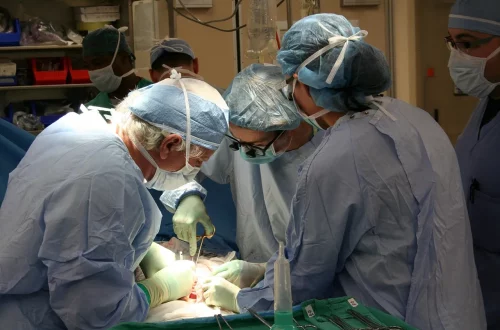
Understanding Dexa Scans: Your Guide in Los Angeles
Understanding the importance of medical imaging techniques is crucial for maintaining optimal health. Among various scanning methods, Dual-Energy X-ray Absorptiometry (DEXA) scans have garnered attention for their unique ability to measure bone density and body composition. As one of the most reliable tools in the field of medicine, DEXA scans play a significant role in diagnosing and monitoring conditions such as osteoporosis, obesity, and metabolic disorders.
In a bustling city like Los Angeles, where health and wellness trends are at the forefront, understanding DEXA scans is essential for those seeking to improve their well-being. With a diverse population and a growing emphasis on preventive healthcare, residents are increasingly turning to advanced imaging techniques to gain insights into their health. As this trend continues, familiarizing oneself with the process, benefits, and implications of DEXA scans becomes increasingly important.
Whether you are an athlete looking to optimize your performance, an individual concerned about bone health, or someone aiming to manage weight effectively, DEXA scans offer valuable information. This guide will help illuminate the various aspects of DEXA scans, equipping you with the knowledge necessary to make informed decisions about your health in the vibrant landscape of Los Angeles.
What is a DEXA Scan?
A DEXA scan, or Dual-Energy X-ray Absorptiometry, is a specialized form of X-ray technology used primarily to measure bone mineral density (BMD) and body composition. This advanced imaging technique utilizes two different X-ray beams to differentiate between bone and soft tissue, providing precise measurements that are essential for assessing bone health.
During the procedure, patients lie on a padded table while a scanning arm passes over their body. The entire process is quick and painless, typically lasting around 10 to 30 minutes. The low levels of radiation exposure involved make DEXA scans safe for most individuals, including those who may require regular monitoring.
DEXA scans are primarily utilized to diagnose conditions such as osteoporosis, a disease characterized by low bone density that increases the risk of fractures. By measuring BMD, healthcare providers can determine an individual’s risk for osteoporosis and recommend appropriate interventions, such as lifestyle changes or medications.
In addition to assessing bone health, DEXA scans are also valuable for evaluating body composition. They provide a detailed breakdown of lean mass, fat mass, and bone mass, enabling healthcare providers and individuals to gain insights into their overall health. This information is particularly beneficial for athletes and those looking to lose weight, as it allows for more tailored health and fitness strategies.
The accuracy and efficiency of DEXA scans have made them a preferred choice for healthcare professionals. As awareness of the importance of bone health and body composition continues to grow, DEXA scans are becoming an integral part of preventive healthcare strategies in Los Angeles and beyond.
The Benefits of DEXA Scans
The advantages of DEXA scans extend beyond mere diagnosis; they play a pivotal role in proactive health management. One of the key benefits is the early detection of bone density issues, which is crucial for preventing fractures and other complications associated with osteoporosis. Early intervention can significantly alter the course of treatment and improve long-term outcomes.
In addition to bone health, DEXA scans provide a comprehensive view of body composition. This is particularly important for individuals looking to achieve specific fitness goals. By understanding the distribution of fat and lean mass, a person can make informed decisions about their diet and exercise routines. For instance, athletes may use DEXA scan results to optimize their training programs and enhance performance.
Moreover, DEXA scans can help identify metabolic disorders that may not be immediately apparent through standard weight measurements. For those struggling with obesity, knowing body composition can lead to more effective weight management strategies. Unlike traditional scales, which only measure weight, DEXA scans offer a detailed analysis that allows for a better understanding of health risks associated with body fat.
Another notable benefit of DEXA scans is their ability to track changes over time. Regular scans can provide valuable insights into the effectiveness of lifestyle changes, treatments, or interventions. This ongoing monitoring empowers individuals to take charge of their health and make necessary adjustments to their routines.
In a city like Los Angeles, where health and wellness are prioritized, the benefits of DEXA scans can help residents achieve their health goals more effectively. Whether it’s preventing osteoporosis, enhancing athletic performance, or managing weight, DEXA scans offer critical information that can lead to better health outcomes.
Preparing for a DEXA Scan
Preparation for a DEXA scan is generally straightforward, allowing for a seamless experience. However, there are specific guidelines that individuals should follow to ensure accurate results. It’s essential to consult with a healthcare provider prior to the scan, particularly if you are taking any medications or have underlying health conditions.
One of the primary recommendations is to avoid calcium supplements for at least 24 hours before the scan. Calcium can temporarily affect the results, leading to inaccurate assessments of bone density. Additionally, it’s advisable to wear comfortable clothing without metal zippers or buttons, as metal can interfere with the imaging process.
On the day of the scan, individuals should arrive at the facility with enough time to complete any necessary paperwork. While the procedure itself is quick, the preparation and waiting time can vary depending on the facility. It’s always a good idea to ask questions and express any concerns to the healthcare professionals on-site.
For those who may feel anxious about undergoing a scan, it’s helpful to understand what to expect during the procedure. The scanning process is painless and non-invasive, which can alleviate concerns. Individuals can relax knowing that they are taking a proactive step towards understanding their health.
After the scan is complete, the results will typically be analyzed and discussed with the patient by their healthcare provider. This follow-up conversation is critical to understanding the implications of the results and determining the next steps in health management.
In summary, proper preparation for a DEXA scan can significantly enhance the accuracy of the results. By following guidelines and being aware of what to expect, individuals can ensure a positive experience while gaining valuable insights into their health.
Understanding DEXA Scan Results
Interpreting DEXA scan results requires a foundational understanding of the metrics involved. The primary output of a DEXA scan includes bone mineral density (BMD) measurements, which are typically expressed in grams per square centimeter (g/cm²). These measurements are then compared to a reference range based on age and sex, allowing healthcare providers to assess an individual’s risk for osteoporosis or other bone-related issues.
Results will often include T-scores and Z-scores. The T-score compares an individual’s BMD to that of a healthy young adult, while the Z-score compares it to age-matched individuals. A T-score of -1.0 or higher is considered normal, while a score between -1.0 and -2.5 indicates low bone density, and anything below -2.5 is classified as osteoporosis.
For body composition analysis, the DEXA scan provides a breakdown of fat mass and lean mass. This information can be instrumental for individuals aiming to lose weight or gain muscle. Understanding the proportions of fat to lean mass can help tailor fitness and nutrition plans effectively.
It’s important to remember that DEXA scan results should be interpreted in the context of an individual’s overall health and lifestyle. Factors such as age, gender, activity level, and family history play significant roles in determining what the results mean for a specific person.
After receiving the results, individuals should engage in a discussion with their healthcare provider to fully understand their implications. This conversation can lead to personalized recommendations, whether it involves lifestyle changes, further testing, or treatment options.
Ultimately, grasping the significance of DEXA scan results empowers individuals to take charge of their health. With the right information and guidance, it’s possible to make informed decisions that promote better bone health and overall well-being.
—
**Disclaimer**: This article is intended for informational purposes only and should not be considered medical advice. Always consult with a qualified healthcare provider for any health-related concerns or questions.




